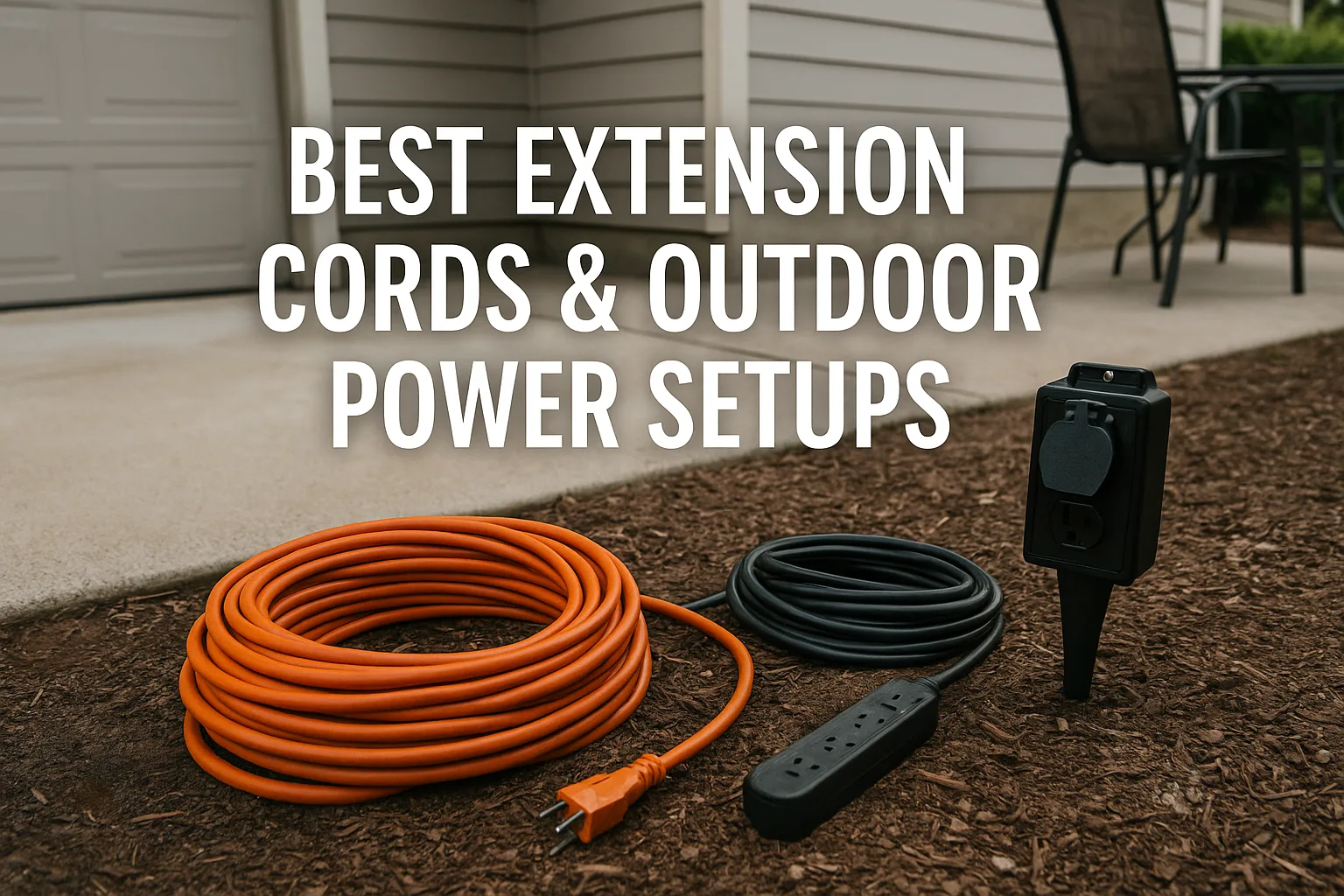New! DIY Project Planner. Plan smarter, skip the spreadsheets. Start Your Free Trial Today →

Choosing the right extension cords for outdoor projects can make your setup safer, more efficient, and a lot less frustrating. Not all cords are created equal and using the wrong one can fry your gear or slow down your work. Here’s how to choose the right extension cords and power setups for your next outdoor DIY project—plus a few bonus tools we never start a build without.
If you’re still using a skinny orange cord from the garage, here’s what you need to know:
For most power tools, go with 12/3 or 14/3 gauge cords rated for outdoor use.
Tired of fighting a tangled cord every weekend?
We use the Bayco Cord Reel with Hand Crank to keep our workspace clean and our cords knot-free.
Other solid picks:
Spring weather is unpredictable. Use these to protect your power source:
Looking for your next weekend win? This list of what’s the best order for kitchen diy projects? is full of simple ideas that pay off.